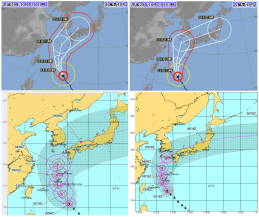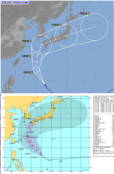【思ったこと】
161002(日)トールネケ『関係フレーム理論(RFT)をまなぶ』(120)アナロジー、メタファー、そして自己の体験(57)「般化オペラント」についての復習(38)RFTからみた般化オペラント(12)
9月30日の続き。
2013年に刊行された、
Dymond, S., & Roche,B. (Eds.) (2013).Advances in Relational Frame Theory Research and Application.
の58頁以降の記述によれば、対称律に関する複数の範例による訓練(multiple-exemplar training)を受けること、とりわけ幼少期において、モノとその名前を双方向に一致させる訓練(symmetrical responding between words and objects)を受けることは、恣意的に適用可能な派生反応(Arbitrarily Applicable Relational Responding、AARR)の基本中の基本ということになる。その確立を通じて、幼児は、モノの名前と実物の間に物理的共通性が全く無い場合でも、特に教わることなしに、対称的な関係を派生させることができるようになる。またこの反応こそ「generalized, contextually controlled relational responding」の最初の例であるとしている。「contextually controlled」という言葉を挿入することで般化オペラント(generalized operant)の本質がより分かりやすくなっていると言えよう。
経験が重なることによって、3つ以上の刺激の同一性や、同一でない関係(比較、区別、反対)を含んだAARRが確立するようになる。この章では続いて、Sidmanらの刺激等価性の研究がAARRに含まれるものであるとも論じていた。
これまで述べたところでは、AARRは複数の範例による訓練(multiple-exemplar training)によって確立するという日常生活の経験談的な事例しか紹介されていなかったが、61頁以降のところでは、
- AARRの最初のパターンの出現とその際にどのような訓練がはっきり行われていたのかを記録した縦断的研究
- じっさいに新たなAARRを確立する研究。ここでは
- :実物の大きさ比較についての「A is bigger than B」という言葉の提示(文脈提示)と実物の大きさの違いを学ぶ
- 訓練→物理的大きさとは無関係のの2者の関係を「Mr. A is bigger than Mr. B」という言葉を通じて(文脈提示)、恣意的に適用可能な大小関係を学ぶ
- AARRの確立が困難な人たちに対する訓練プログラム
という訓練も紹介されていた。出典は以下の通り。
- Lipkens, R., Hayes, 8. C., &. Hayes, L. J. (1993). Longitudinal study of the development of derived relations in an infant. Journal of Experimental Child Psychology,56, 201-239.
- Luciano, C., Gomez Becerra, I., & Rodriguez Valverde, M. (2007). The role of multiple-exemplar training and naming in establishing derived equivalence in an infant. Journal of the Experimental Analysis of Behavior, 87, 349-365.
- Barnes-Holmes, Y., Barnes-Holmes, D., Smeets, P. M., Strand, P., &- Friman, P. (2004). Establishing relational responding in accordance with more-than and less-than as generalized operant behavior in young children. International Journal of Psychology and Psychological Therapy, 4, 531-558.
- Barnes-Holmes, Y., Barnes-Holmes, D., Smeets, P. M. (2004). Establishing relational responding in accordance with opposite as generalized operant behavior in young children. International Journal of Psychology and Psychological Therapy, 4, 559-586.
- Berens, N. M., &. Hayes, S. C. (2007). Arbitrarily applicable comparative relations: Experimental evidence for relational operants. Journal of Applied Behavior Analysis, 40, 45-71.
- Carpentier, F., Smeets, P. M., & Barnes-Holmes, D. (2003). Equivalence-equivalence as a model of analogy: Further analyses. The Psychological Record, 53, 349-372.
- McHugh, L., Barnes-Holmes, Y., Barnes-Holmes, D., & Stewart, 1. (2006). Understanding false belief as generalized operant behavior. The Psychological Record, 56,341-364.
- Roche, B., & Barnes, D. (1997). A transformation of respondently conditioned stimulus function in accordance with arbitrarily applicable relations. Journal of the Experimental Analysis of Behavior, 67, 275-300.
- Resales, R., Rehfeldt, R. A., & Lovett, S. (2011). Effects of multiple exemplar training on the emergence of derived relations in preschool children learning a second language. The Analysis of Verbal Behavior, 27, 61-74.
- Steele, D. L., &. Hayes, S. C. (1991). Stimulus equivalence and arbitrarily applicable relational responding. Journal of the Experimental Analysis of Behavior, 56, 519-555.
- Rehfeldt, R. A., & Barnes-Holmes, Y. (Eds.) (2009). Derived relational responding: Applications for learners with autism and other developmental disabilities. Oakland, CA: Context Press/New Harbinger.
次回に続く。
|





